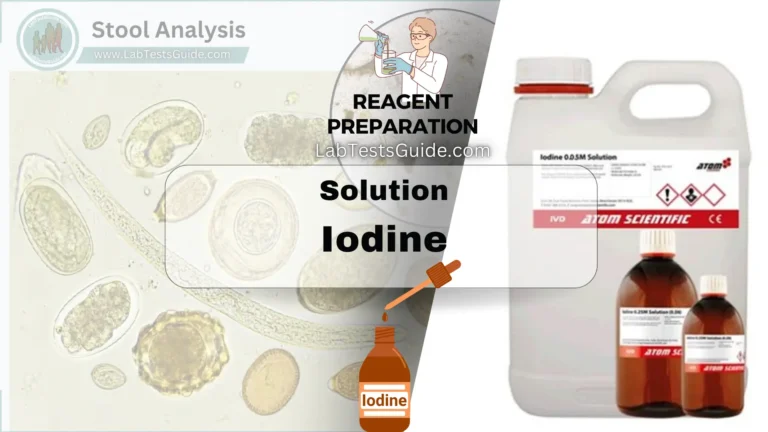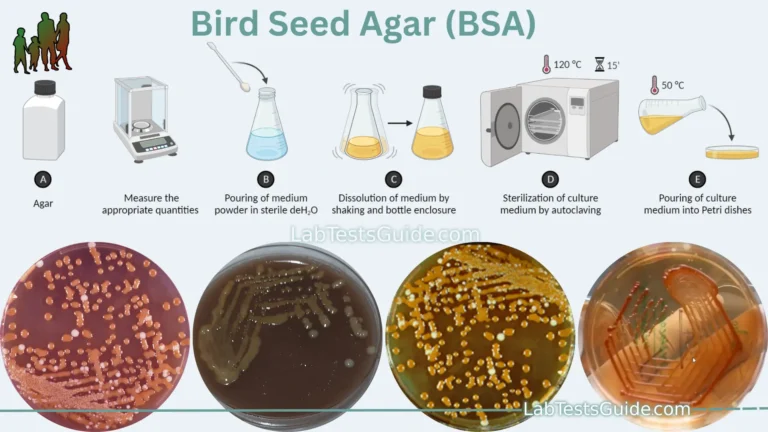Benzoic Acid (C₇H₆O₂) is a simple aromatic carboxylic acid that plays a significant role in both industrial and clinical settings. Recognized for its antifungal and antibacterial properties, benzoic acid has found widespread application in clinical laboratories. This article explores the uses of benzoic acid within the clinical laboratory environment, focusing on its functions, applications, and safety considerations.

Uses of Benzoic Acid:
- Food Preservative: Prevents microbial growth in foods and beverages, extending shelf life.
- Cosmetics: Acts as a preservative and pH adjuster in lotions, shampoos, and other products.
- Pharmaceuticals: Used in topical ointments and creams for its antiseptic and antifungal properties.
- Industrial Chemicals: Precursor in the synthesis of dyes, perfumes, and plasticizers.
- Insect Repellents: Used in the production of repellents to deter insects.
- Plastic Manufacturing: Starting material for making certain plastics like polyethylene terephthalate (PET).
- Perfume Industry: Helps stabilize and preserve fragrances in perfumes.
- Laboratory Standards: Used as a reference standard for calibrating analytical equipment.
Composition of Benzoic Acid:
| Component | Quantity |
|---|---|
| Benzoic Acid | 1 g |
| Distilled Water | 1 litre |
Instructions:
- Dissolve 1 gram of benzoic acid in distilled water.
- Adjust the volume of the solution with distilled water to reach a total volume of 1 litre.
Preparation of Benzoic Acid:
- Heat Water: Heat approximately 500 ml of distilled water to 50–70°C.
- Weigh Benzoic Acid: Weigh the required amount of benzoic acid and transfer it to a 1-litre volumetric flask.
- Dissolve: Add the hot water to the flask until it is half full. Swirl or stir the solution to dissolve the benzoic acid completely. Allow the solution to cool to room temperature.
- Make Up to Volume: Once the solution has cooled, add distilled water to the 1-litre mark on the volumetric flask. Mix thoroughly to ensure the solution is uniform.
- Store: Transfer the solution to a leak-proof bottle. Label the bottle with the contents and date. Store at room temperature. The solution is stable indefinitely.
Precautions:
- Protective Gear: Always wear appropriate personal protective equipment (PPE), such as gloves, safety goggles, and a lab coat, to avoid direct contact with benzoic acid, which can be irritating to the skin and eyes.
- Ventilation: Work in a well-ventilated area or use a fume hood to avoid inhaling any vapors or dust from benzoic acid, especially if heating or mixing in an open environment.
- Heat Safety: When heating water, use appropriate heating devices and handle the hot water with care to prevent burns or spills.
- Accurate Measurement: Ensure accurate measurement of benzoic acid and water to maintain the correct concentration of the solution. Use calibrated equipment for precision.
- Avoid Contamination: Keep all equipment and containers clean to avoid contamination of the solution. Use clean utensils and containers when transferring or mixing the solution.
- Proper Storage: Store the prepared benzoic acid solution in a leak-proof, labeled bottle to prevent accidental spillage and to ensure proper identification. Keep it at room temperature and away from direct sunlight and heat sources.
- Disposal: Dispose of any benzoic acid waste or contaminated materials according to local regulations and guidelines for hazardous chemicals. Avoid flushing large quantities down the drain.
- Handling Spills: In case of a spill, clean up immediately using appropriate methods and dispose of contaminated materials properly. Ensure the area is well-ventilated during cleanup.
Uses of Benzoic Acid in Clinical Laboratories:
- Preservative: Prevents microbial contamination in diagnostic reagents and solutions, ensuring their stability and accuracy.
- pH Adjustment: Used in buffer solutions to maintain a stable pH, which is crucial for accurate biochemical assays.
- Histopathology: Involved in staining procedures and tissue preservation, aiding in the accurate diagnosis of pathological conditions.
- Antimicrobial Agent: Inhibits microbial growth in cultures and solutions, essential for maintaining clean laboratory environments.
- Reference Standard: Serves as a calibration standard in analytical methods to ensure the accuracy and consistency of laboratory equipment.
Possible References Used




